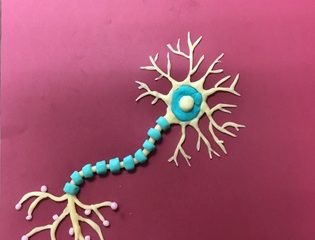Here’s what we are reading today:
““Optogenetics has more than anything else let people play the piano in the brain, as opposed to just slamming their whole forearm down on all the keys,” says Joshua Sanes, a neuroscientist at Harvard.”
“”To date the biological validity and neural underpinnings of these separate value systems remain unclear,” said Dr Marios Philiastides, who led the work published in the journal Nature Communications.
In order to understand the neuronal basis of these systems, Dr. Philiastides’ team devised a novel state-of-the-art brain imaging procedure.
Specifically, they hooked up volunteers to an EEG machine (to measure brain electrical activity) while they were concurrently being scanned in an MRI machine.”
“Did hunter-gatherers eat oatmeal 25,000 years before the spread of farming? That’s the implication of a new study from this cave in southeastern Italy called Grotta Paglicci, which was occupied by Upper Paleolithic hunter-gatherers about 32,000 years ago. Researchers have found significant traces of oat grains on a stone pestle found in the cave, they report this week in the Proceedings of the National Academy of Sciences.”
“The study was led by Professor Simon Baron-Cohen, Director of the Autism Research Centre (ARC) at the University of Cambridge. Almost 400 men and women with autism or Asperger Syndrome took the test online, which entails looking at a series of photographs of just the eye region of the face, and picking which of four words best describe what the person in the photo is thinking or feeling.”
“Stephen W. Scherer, Ph.D., of the Hospital for Sick Children, Toronto, and colleagues performed chromosomal microarray analysis (CMA) and whole-exome sequencing (WES) in a group of 258 unrelated children with ASD to determine the molecular diagnostic yield (the percentage of subjects with a genetic alteration [mutation] that may contribute to the features of autism spectrum disorder) of these tests.”
““By understanding how the brain attempts to implement cognitive flexibility in a neurodevelopmental disorder like autism, we can better understand the nature of the disorder,” said Dina R. Dajani, a Ph.D. student of psychology and first author of the study. “The model will inform whether we should try to teach individuals with autism the strategies utilized by typically developing individuals, or instead improve upon already existing strategies of individuals with the disorder.””




2 Comments
Sophie Marsh · December 1, 2015 at 5:22 pm
I found the “Men and Women of Autism” article particularly, due to our discuss today in class about Autism Spectrum Disorder and the national conversation/increasing prevalence in our nation. I thought it was particularly interesting in this study that the same pattern appeared on a number of different test (eyes, empathy, social sensitivity, etc..) and that even in those with Autism there is a difference between the genders. I think the upcoming years will bring much more research into Autism and hopefully we will be able to start understanding it fully.
vimorris@calpoly.edu · May 22, 2016 at 8:50 pm
In response to the article “Switching Thinking about Cognitive Flexibility”
As the article suggests I can relate to taking for granted my ability to disengage from a previous task and respond effectively to a new one. I’m excited to see how much further our understanding of cognitive flexibility and the means in which we use the information will aid members of our society. I wonder what impacts the findings will have on schools and if it will influence the way a classroom is set up for instruction in the future.